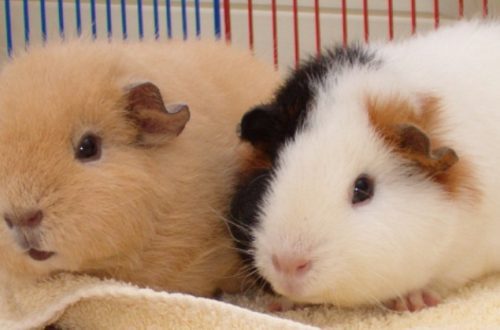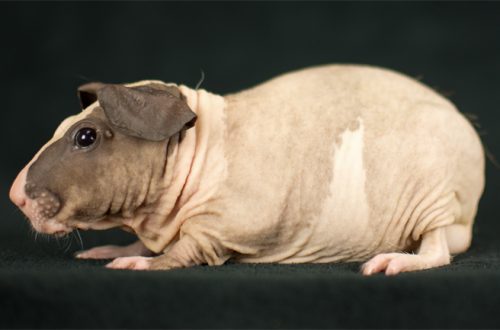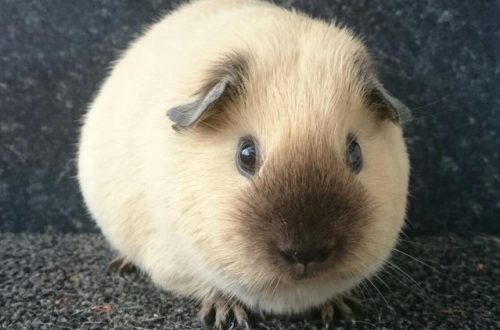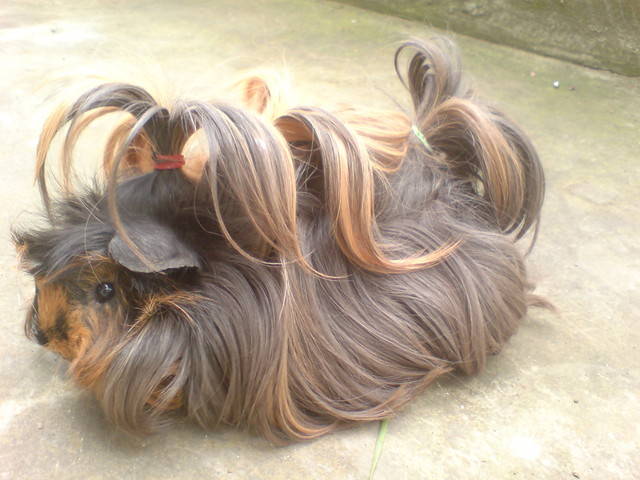
د پیرو ګنی سور
Representatives of the Peruvian breed (Peruvian Ginea Pig) are majestic guinea pigs, with long, flowing hair, a truly royal pet. Although Peruvians are very energetic, friendly and sweet animals, before you get yourself such a guinea pig, you need to consider a number of important points. Proper care of Peruvian guinea pigs will require regular time commitments.
Often, when coming to a pet store, an ordinary buyer, admiring a guinea pig with long hair, assumes that in front of him is none other than a long-haired or, in other words, angora guinea pig. How to distinguish a Peruvian guinea pig from other breeds, and how competently should it still be called?
Representatives of the Peruvian breed (Peruvian Ginea Pig) are majestic guinea pigs, with long, flowing hair, a truly royal pet. Although Peruvians are very energetic, friendly and sweet animals, before you get yourself such a guinea pig, you need to consider a number of important points. Proper care of Peruvian guinea pigs will require regular time commitments.
Often, when coming to a pet store, an ordinary buyer, admiring a guinea pig with long hair, assumes that in front of him is none other than a long-haired or, in other words, angora guinea pig. How to distinguish a Peruvian guinea pig from other breeds, and how competently should it still be called?

کړی
From the history of Peruvian guinea pigs
Where did these magnificent guinea pigs come from? And why do they have such long hair? Because of their unusual appearance, one might think that they were specially bred in a laboratory, like the same skinny, for example. But in fact, Peruvian guinea pigs appeared as a result of natural evolutionary processes. Their homeland is South America, and more specifically, as scientists believe, countries such as Bolivia, Argentina and, of course, Peru. Hence the name of the breed.
Back in the XNUMXth century, Peruvian guinea pigs were brought by European traders to France, where they became exotic pets and were very expensive. It was from France that Peruvians came to the UK and other European countries in order to later become a fashionable “novelty” and win the hearts of breeders around the world.
Pigs of this breed gained wide popularity in Europe from the middle of the XNUMXth century, and at the end of the XNUMXth century they were first demonstrated and photographed at an agricultural exhibition in Paris.
At first, there were only three recognized breeds at shows in America: the smooth-haired, the Abyssinian, and the long-haired angora. In the 1930s, the name “angora” was changed to “Peruvian”, which introduced some confusion that still persists. Although in some countries the breeding of guinea pigs of the Angora breed continues, with standards developed specifically for this breed. For Peruvian guinea pigs, standards have been developed and certain criteria have been developed. Now the Peruvian breed has official recognition in many countries.
In our country, it is also quite a popular breed. Many catteries breed Peruvians, although finding this breed in pet stores will not be easy.
Where did these magnificent guinea pigs come from? And why do they have such long hair? Because of their unusual appearance, one might think that they were specially bred in a laboratory, like the same skinny, for example. But in fact, Peruvian guinea pigs appeared as a result of natural evolutionary processes. Their homeland is South America, and more specifically, as scientists believe, countries such as Bolivia, Argentina and, of course, Peru. Hence the name of the breed.
Back in the XNUMXth century, Peruvian guinea pigs were brought by European traders to France, where they became exotic pets and were very expensive. It was from France that Peruvians came to the UK and other European countries in order to later become a fashionable “novelty” and win the hearts of breeders around the world.
Pigs of this breed gained wide popularity in Europe from the middle of the XNUMXth century, and at the end of the XNUMXth century they were first demonstrated and photographed at an agricultural exhibition in Paris.
At first, there were only three recognized breeds at shows in America: the smooth-haired, the Abyssinian, and the long-haired angora. In the 1930s, the name “angora” was changed to “Peruvian”, which introduced some confusion that still persists. Although in some countries the breeding of guinea pigs of the Angora breed continues, with standards developed specifically for this breed. For Peruvian guinea pigs, standards have been developed and certain criteria have been developed. Now the Peruvian breed has official recognition in many countries.
In our country, it is also quite a popular breed. Many catteries breed Peruvians, although finding this breed in pet stores will not be easy.
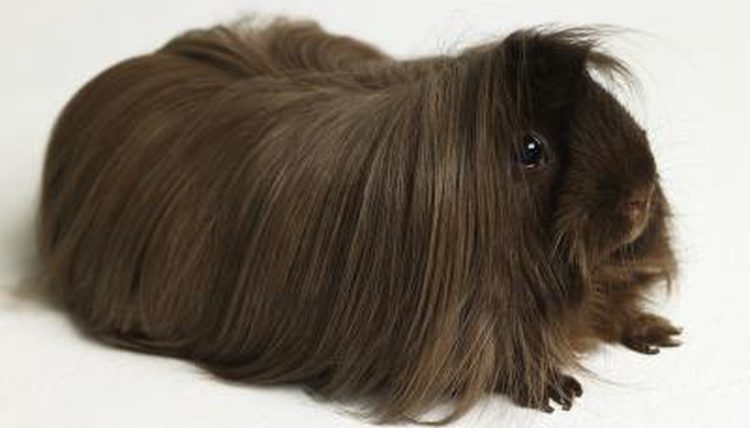
Key Features of Peruvian Guinea Pigs
The Peruvian guinea pig looks very aristocratic. Its long, straight and silky coat forms a kind of mantle. And the magnificent bangs give the Peruvian an elegant and mysterious look. Sometimes, the bangs can be so long that it seems that in front of you is not a guinea pig, but a wig.
The most noticeable characteristic of the Peruvian is their long coat. It is not surprising that the world record for the longest coat in guinea pigs (almost 51 cm!) Was recorded in the Peruvian guinea pig.
Visually, the Peruvian guinea pig can be distinguished from other breeds by the following parameters:
- Long hair on the back forms a parting along the entire spine.
- On the head, the hair falls like a bang on the muzzle, sideburns are pronounced, which also have a forward direction.
- There are two rosettes on the sacrum, which determine the growth of wool from the sacrum to the muzzle.
- The growth of the coat should be strictly forward, towards the head.
The Peruvian guinea pig is obviously no ordinary pet. These pigs have unique physical characteristics that make them special. For example, Peruvian pigs can reach quite large sizes. They usually weigh more than any other breed. But despite their larger size, they have an unusually small head compared to other breeds such as Americans.
Often, Peruvian pigs are compared to the Sheltie breed, because both of them have long hair, but in fact these pigs are very different. The coat of the Sheltie grows back in a continuous cascade, towards the sacrum, while in the Peruvian pig, in the upper part of the head, the coat breaks up into a parting and the direction of the coat is reversed – from the sacrum to the head.
In part, Peruvian pigs are similar to Abyssinians, but the former have much longer hair and only two rosettes instead of the usual 6-8 for Abyssinians.
While the hair on the back of a Peruvian can grow up to 50 cm, the hair on the belly will only grow to 15-17 cm in length.
The Peruvian guinea pig looks very aristocratic. Its long, straight and silky coat forms a kind of mantle. And the magnificent bangs give the Peruvian an elegant and mysterious look. Sometimes, the bangs can be so long that it seems that in front of you is not a guinea pig, but a wig.
The most noticeable characteristic of the Peruvian is their long coat. It is not surprising that the world record for the longest coat in guinea pigs (almost 51 cm!) Was recorded in the Peruvian guinea pig.
Visually, the Peruvian guinea pig can be distinguished from other breeds by the following parameters:
- Long hair on the back forms a parting along the entire spine.
- On the head, the hair falls like a bang on the muzzle, sideburns are pronounced, which also have a forward direction.
- There are two rosettes on the sacrum, which determine the growth of wool from the sacrum to the muzzle.
- The growth of the coat should be strictly forward, towards the head.
The Peruvian guinea pig is obviously no ordinary pet. These pigs have unique physical characteristics that make them special. For example, Peruvian pigs can reach quite large sizes. They usually weigh more than any other breed. But despite their larger size, they have an unusually small head compared to other breeds such as Americans.
Often, Peruvian pigs are compared to the Sheltie breed, because both of them have long hair, but in fact these pigs are very different. The coat of the Sheltie grows back in a continuous cascade, towards the sacrum, while in the Peruvian pig, in the upper part of the head, the coat breaks up into a parting and the direction of the coat is reversed – from the sacrum to the head.
In part, Peruvian pigs are similar to Abyssinians, but the former have much longer hair and only two rosettes instead of the usual 6-8 for Abyssinians.
While the hair on the back of a Peruvian can grow up to 50 cm, the hair on the belly will only grow to 15-17 cm in length.
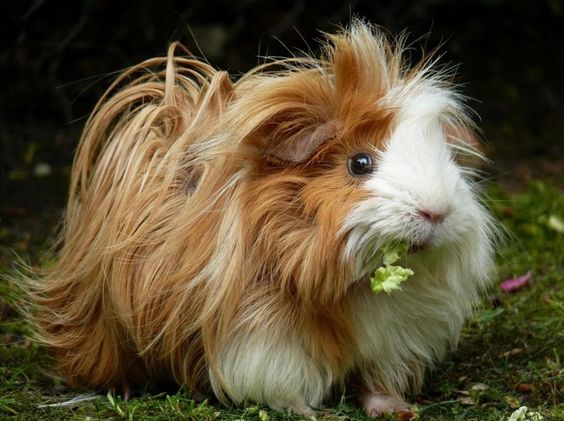
ساتنه او ساتنه
Of course, in terms of care, Peruvian guinea pigs will be more demanding than, say, short-haired breeds, so it is not recommended to purchase such a pig as a first guinea pig. Also, do not have Peruvians as pets for children. Instead, buy a simple, sleek guinea pig for your son or daughter—there will be just as much joy and much less hassle.
The Peruvian breed is developed by enthusiasts and/or experienced breeders with sufficient time to care for them.
Hair care for Peruvian pigs
Peruvians need daily brushing and brushing, and some owners even do it twice a day. For hair care, ordinary children’s combs, which can be bought at any children’s goods store, or special brushes and combs, which are offered at a pet store, are suitable.
If you do not plan to participate in exhibitions and shows with your pet, then it will make sense to regularly trim the constantly growing coat to a comfortable length so that it does not get dirty in the cage, so that hay does not get tangled in it and it is convenient for the pet to move around.
If participation in exhibitions is a common practice for you, then you will have to come up with special devices for holding wool (rubber bands, hairpins, etc.)
In general, bathing guinea pigs is not recommended, but an exception is made for long-haired breeds. Therefore, a bath once every one or two months will be quite acceptable. It is only necessary to use a specialized rodent shampoo for washing or do without it at all.
Feeding Peruvian Guinea Pigs
As far as diet is concerned, Peruvian guinea pigs will not differ in any way from other guinea pigs. Vegetables, fruits, hay and fresh grass, special pellets (dry food) – that’s the whole menu. All guinea pigs are herbivores and absolute vegetarians. Do not forget that the pig’s cage should always have clean drinking water. Read more about feeding guinea pigs in the “Nutrition” section.
Of course, in terms of care, Peruvian guinea pigs will be more demanding than, say, short-haired breeds, so it is not recommended to purchase such a pig as a first guinea pig. Also, do not have Peruvians as pets for children. Instead, buy a simple, sleek guinea pig for your son or daughter—there will be just as much joy and much less hassle.
The Peruvian breed is developed by enthusiasts and/or experienced breeders with sufficient time to care for them.
Hair care for Peruvian pigs
Peruvians need daily brushing and brushing, and some owners even do it twice a day. For hair care, ordinary children’s combs, which can be bought at any children’s goods store, or special brushes and combs, which are offered at a pet store, are suitable.
If you do not plan to participate in exhibitions and shows with your pet, then it will make sense to regularly trim the constantly growing coat to a comfortable length so that it does not get dirty in the cage, so that hay does not get tangled in it and it is convenient for the pet to move around.
If participation in exhibitions is a common practice for you, then you will have to come up with special devices for holding wool (rubber bands, hairpins, etc.)
In general, bathing guinea pigs is not recommended, but an exception is made for long-haired breeds. Therefore, a bath once every one or two months will be quite acceptable. It is only necessary to use a specialized rodent shampoo for washing or do without it at all.
Feeding Peruvian Guinea Pigs
As far as diet is concerned, Peruvian guinea pigs will not differ in any way from other guinea pigs. Vegetables, fruits, hay and fresh grass, special pellets (dry food) – that’s the whole menu. All guinea pigs are herbivores and absolute vegetarians. Do not forget that the pig’s cage should always have clean drinking water. Read more about feeding guinea pigs in the “Nutrition” section.
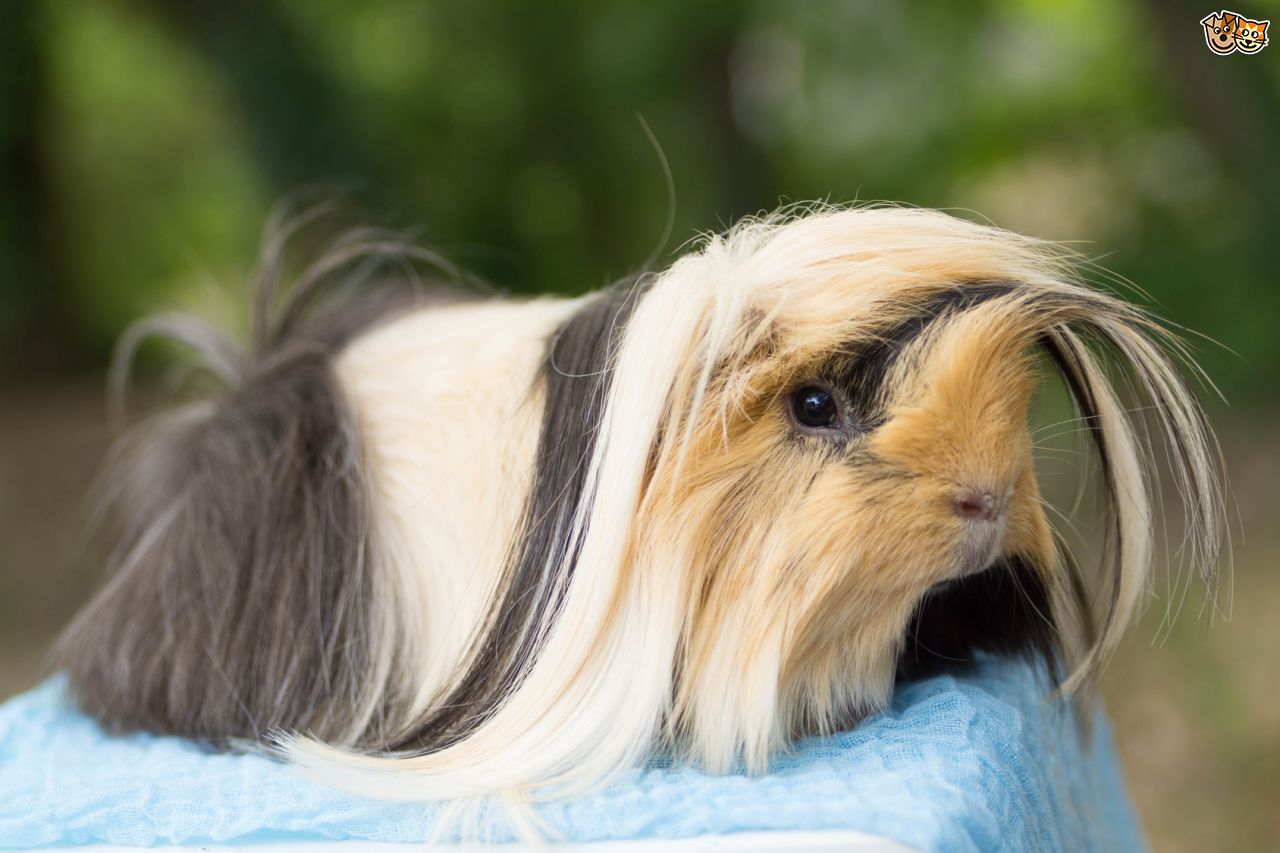
The nature of the Peruvian guinea pig
The nature of the guinea pig usually does not depend on the breed, but due to their aristocracy, the Peruvians are distinguished by a meek and calm disposition.
In addition, Peruvians are very curious little creatures. Some breeds of guinea pigs are very timid when it comes to meeting a person or exploring the world around them, but this is not at all the case for most Peruvians. They are very fond of walking, they are happy to explore new places and locations.
The Peruvian guinea pig is a very friendly breed, sensitive to affection and care. If every day at least a little time is spent playing or practicing with a pig, her attachment to the owner will be very strong.
They are quite talkative, and having got such a pig, you will be able to fully appreciate the entire sound repertoire of guinea pigs.
Peruvian guinea pigs are a very social breed and are particularly susceptible to loneliness, so it would be a good idea to get them a fellow tribesman. The best option for keeping guinea pigs are same-sex groups.
The nature of the guinea pig usually does not depend on the breed, but due to their aristocracy, the Peruvians are distinguished by a meek and calm disposition.
In addition, Peruvians are very curious little creatures. Some breeds of guinea pigs are very timid when it comes to meeting a person or exploring the world around them, but this is not at all the case for most Peruvians. They are very fond of walking, they are happy to explore new places and locations.
The Peruvian guinea pig is a very friendly breed, sensitive to affection and care. If every day at least a little time is spent playing or practicing with a pig, her attachment to the owner will be very strong.
They are quite talkative, and having got such a pig, you will be able to fully appreciate the entire sound repertoire of guinea pigs.
Peruvian guinea pigs are a very social breed and are particularly susceptible to loneliness, so it would be a good idea to get them a fellow tribesman. The best option for keeping guinea pigs are same-sex groups.
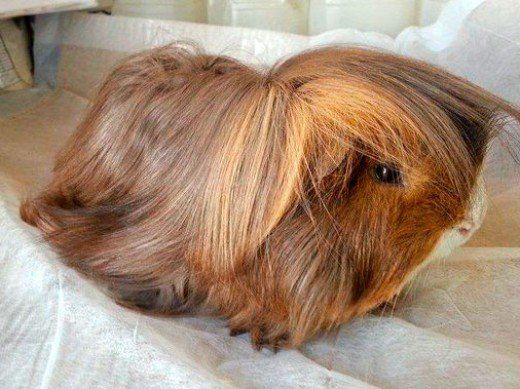
Peruvian guinea pig colors
The most common colors of this breed include white, dark brown, light brown and even black. Less common is gray hair.
Color can have a wide variety of colors and patterns. There are single colored Peruvian guinea pigs that are known as Selfie Peruvians. Two-color Peruvians are also quite common, but the tri-color Peruvian guinea pig is already a rarity.
The most common colors of this breed include white, dark brown, light brown and even black. Less common is gray hair.
Color can have a wide variety of colors and patterns. There are single colored Peruvian guinea pigs that are known as Selfie Peruvians. Two-color Peruvians are also quite common, but the tri-color Peruvian guinea pig is already a rarity.
Summing up, we can say that Peruvian guinea pigs amaze with their beauty, sophistication and elegance, they are truly worthy of a podium at exhibitions.
Summing up, we can say that Peruvian guinea pigs amaze with their beauty, sophistication and elegance, they are truly worthy of a podium at exhibitions.



